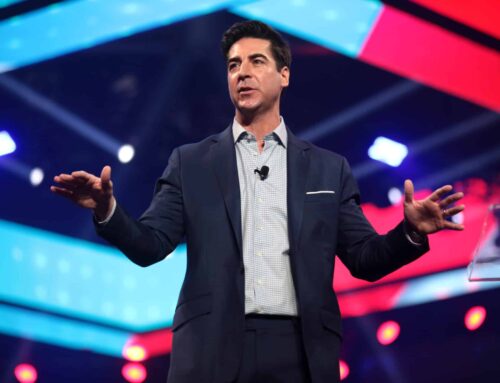Since the unveiling of the Republican proposal to reform the tax code – the “Unified Framework for Fixing Our Broken Tax Code” – there has been lots of talk about what the proposal would cost, how it would impact the deficit and the debt and how much it will impact the economy.
Treasury Secretary Steve Mnuchin says the plan will reduce the deficit by $1 trillion over 10 years. Office of Management and Budget Director Mick Mulvaney says the opposite: that it will, in fact, increase the deficit because that is the only way to stimulate the kind of growth needed to ultimately reduce the deficit.
However good in faith these contradicting statements may be, they can’t be taken at face value, simply because they are not based on a level of detail that would allow for a true cost estimate. The framework presents concepts, some of which conflict, and leaves out most key details.
But figuring out exactly what the effects of any fully formed tax reform proposal will be on revenue and the deficit is a critical step in determining whether that proposal will do what its proponents say and address any of our fiscal and economic needs as a country.
The good news is we have competent offices in place to develop these estimates and projections. They are the official scorekeepers of Congress: the Congressional Budget Office and the Joint Committee on Taxation.
The Joint Committee on Taxation evaluates almost all revenue measures. The Congressional Budget Office is charged with estimating the fiscal impacts of spending and authorizing legislation, as well as some forms of revenue, like natural resource revenues, which are considered “negative spending.” Both are nonpartisan and have professional staff that provide consistency in scoring – costing out – complicated legislation.
The CBO was created by the Congressional Budget and Impoundment Act of 1974. While the Joint Committee’s origins can be traced to 1926, its modern function as the scorekeeper of virtually all revenue-related legislation resulted from the 1974 Budget Act. The Budget Act created the current congressional budget process and was in part the product of congressional frustration with having to trust the say-so of the president’s Office of Management and Budget (and before 1970, the Bureau of the Budget) on economic matters.
In Congress’ view, having political offices responsible for budget projections allowed the White House to tip the scales, producing analysis that suggested the desired result as opposed to an objective and neutral umpire to simply inform policymakers of the consequences of legislative proposals.
Revenue scoring is a three-step process:
1. Construct an economic baseline, which is a forecast of key economic aggregates such as gross domestic product, investment, interest rates, inflation and population under current law.
2. Estimate baseline revenues assuming no changes in policy based on the economic baseline.
3. Estimate government revenues under proposed law and the economic baseline. The revenue score equals estimated proposed-law revenues minus estimated current-law revenues. The Budget Office undertakes steps one and two, and the staff of the Joint Committee generates the official score for tax proposals in step three.
Just like calling balls and strikes, the decisions made by the scorekeepers can be controversial. I have been critical of the CBO in the past and think there is lots of room for improvement. I’d like the scorekeeping methodology to be more transparent, for example, and see a regular process of reviewing previous scores to determine if there were scoring modifications or tweaks that make future scores more accurate.
Others would like both scorekeepers to use a more dynamic scoring model than is current practice.
Let’s be clear: The current scoring systems used by both the CBO and the Joint Committee are dynamic – by which we mean that, in the step three I’ve described above, those estimates of future revenue reflect some macroeconomic effects of the changed policy. So if change in law is projected to stimulate growth, the score will reflect both the math of the change in law (for example, a rate adjustment) as well as growth in revenue as a result of growth in the economy.
The problem, as many proponents of the ideas in the Unified Framework see it, is that the current scores are not dynamic enough. These proponents – like Mnuchin – believe that the upside of growth that will be achieved through their tax cuts will be so enormous that it will not only erase revenue losses, it will yield revenue gains. The vast majority of economists reject this thought – and also reject the broader concept that tax cuts pay for themselves through growth.
So back to the playing field before us now. In search of a score that will justify their desired policy proposals, some members of Congress have suggested using an average of scores from private organizations and think tanks spanning the political spectrum. This proposal raises many questions. How would potential conflicts presented by who pays for the scores be disclosed and evaluated? Who judges what is politically balanced? Who selects the participating score keepers? What would prevent organizations from gaming the system to skew their estimates and shift the average towards their desired outcome?
Still others in Congress seem to be moving towards voting on legislation before there is a full budget score, as they did in the effort to repeal the Affordable Care Act.
Lawmakers should have all the facts before voting on legislation, and that includes the score. If there is no score, there should be no vote.
Particularly on something as critical and with as broad an impact as tax reform.
Congress established that the CBO and the Joint Committee of Taxation would be the final arbiter on scoring legislation. The goal was to create budget projections that did not reinforce ideological assumptions, but informed policymakers of the likely consequences of their policy proposals. Despite howls from whichever aggrieved party, having an independent entity within the legislative branch have the final word remains important.
In the current debate about tax reform and tax cuts, many of the complaints about congressional scores stem from the fact that the CBO has projected a growth rate of less than 2 percent, while proponents of major tax cuts insist their proposals (despite their current lack of detail) will produce 3 or 4 percent growth. I would argue that even if those rosy growth projections prove to be true (something most economists doubt), it is still the right course for the congressional scorekeepers to err on the side of conservative projections. It is far better to have the option of reducing our deficit and paying down our nearly $20 trillion debt with excess revenues, than digging ourselves deeper into a hole.














Get Social